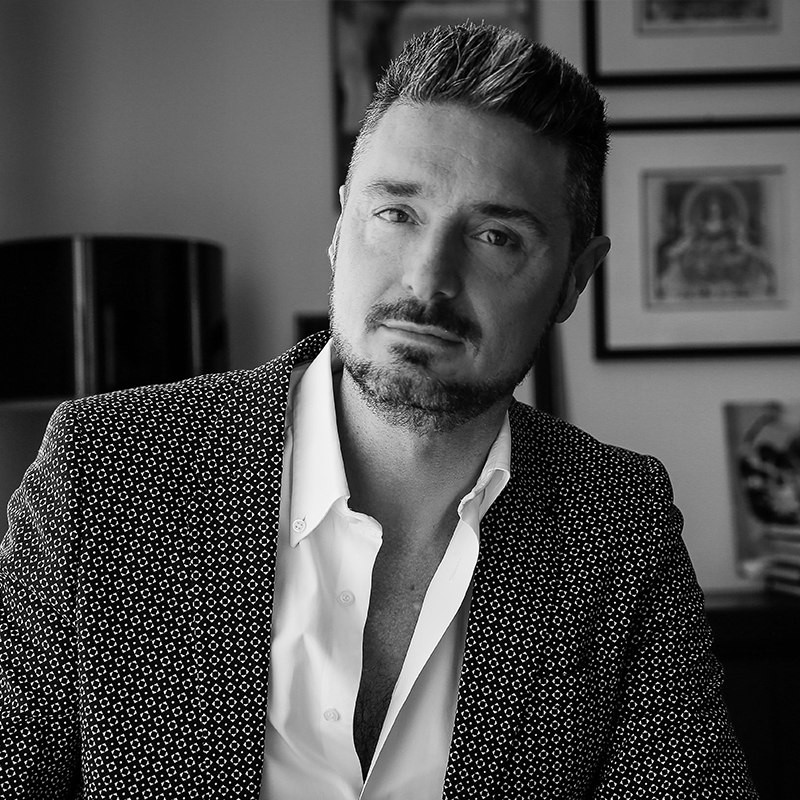C: How did the idea for the Fly collection come about?
M: Fly was born from the intuition of a metal profile that Contardi's technical office was working on. I was immediately struck by the potential of this simple element, which, with a few adjustments, could become a lighting object with a strong character. My idea originated there—I drew a vertical line in my notebook, and that was the first sketch of Fly. From that essential stroke, a concept developed, leading to the creation of a versatile collection that, in its purity, boasts a striking personality and a unique visual strength.
"The character of Fly is most evident when placed in a minimalist space or arranged in a linear repetition, preserving its graphic strength and unique identity."
C: What were the main challenges during the design process?
M: The main challenge was determining whether the profile could house a light source powerful enough to effectively illuminate a space. Choosing LEDs was crucial to ensuring high-performance lighting while maintaining the object's aesthetic purity. To give the lamp a strong visual impact, I envisioned it as tall—reaching a height of 2.5 meters, much taller than the average floor lamp. This gave Fly a unique presence, enhancing spaces with both elegance and power. Naturally, this decision also presented technical challenges related to stability, durability, and mounting. We developed minimalistic solutions to attach the lamp without disrupting its sleek silhouette.
C: What are the ideal environments for Fly, and how does it enhance the space?
M: Fly adapts to a variety of environments thanks to its different versions, but it truly shines in minimalist and clean spaces. For instance, I imagine a neutral wall with two floor Fly lamps—the effect is powerful, almost sculptural. The other versions—wall-mounted, bathroom, and suspension for dining tables or kitchen islands—make Fly suitable for the entire home. However, its character is most evident when placed in an essential space or in a linear repetition, preserving its graphic strength and unique identity.

C: How do you see the evolution of lighting design in the coming years?
I believe that lighting is increasingly merging with architecture and furniture. Integrated LEDs in ceilings, walls, or floors create light effects without exposing the light source, reducing the visible role of the object's design. Aesthetically, minimalism and transparency, supported by light technologies and materials, are making lamps structural elements that define space in an almost sculptural way. The challenge is not just aesthetic but also environmental: technological research is focused on harnessing natural light to reduce artificial lighting during the day. Light will become increasingly dynamic and "smart," but personally, I like to think that a lamp will continue to perform its main function, even without necessarily being "connected."